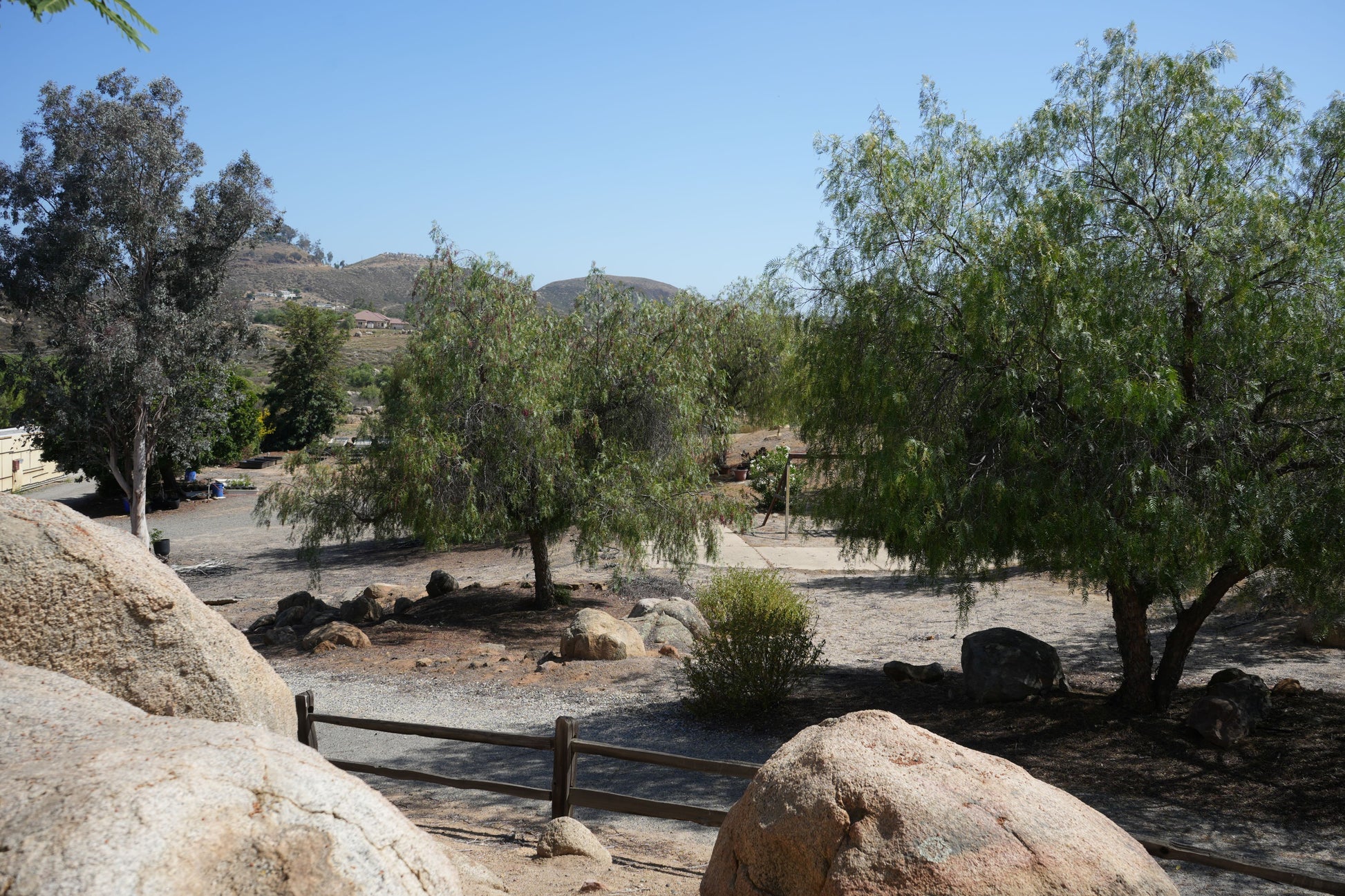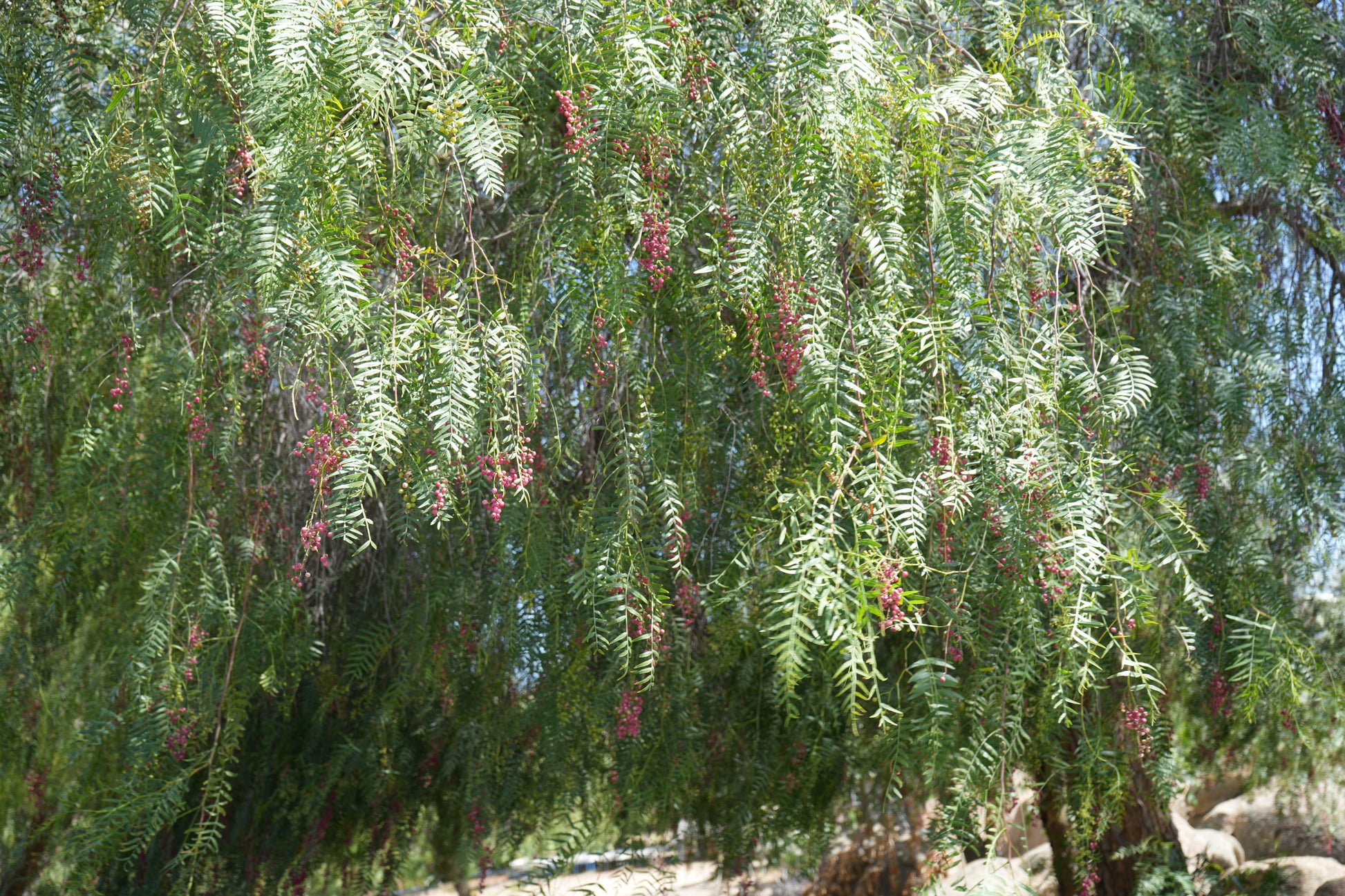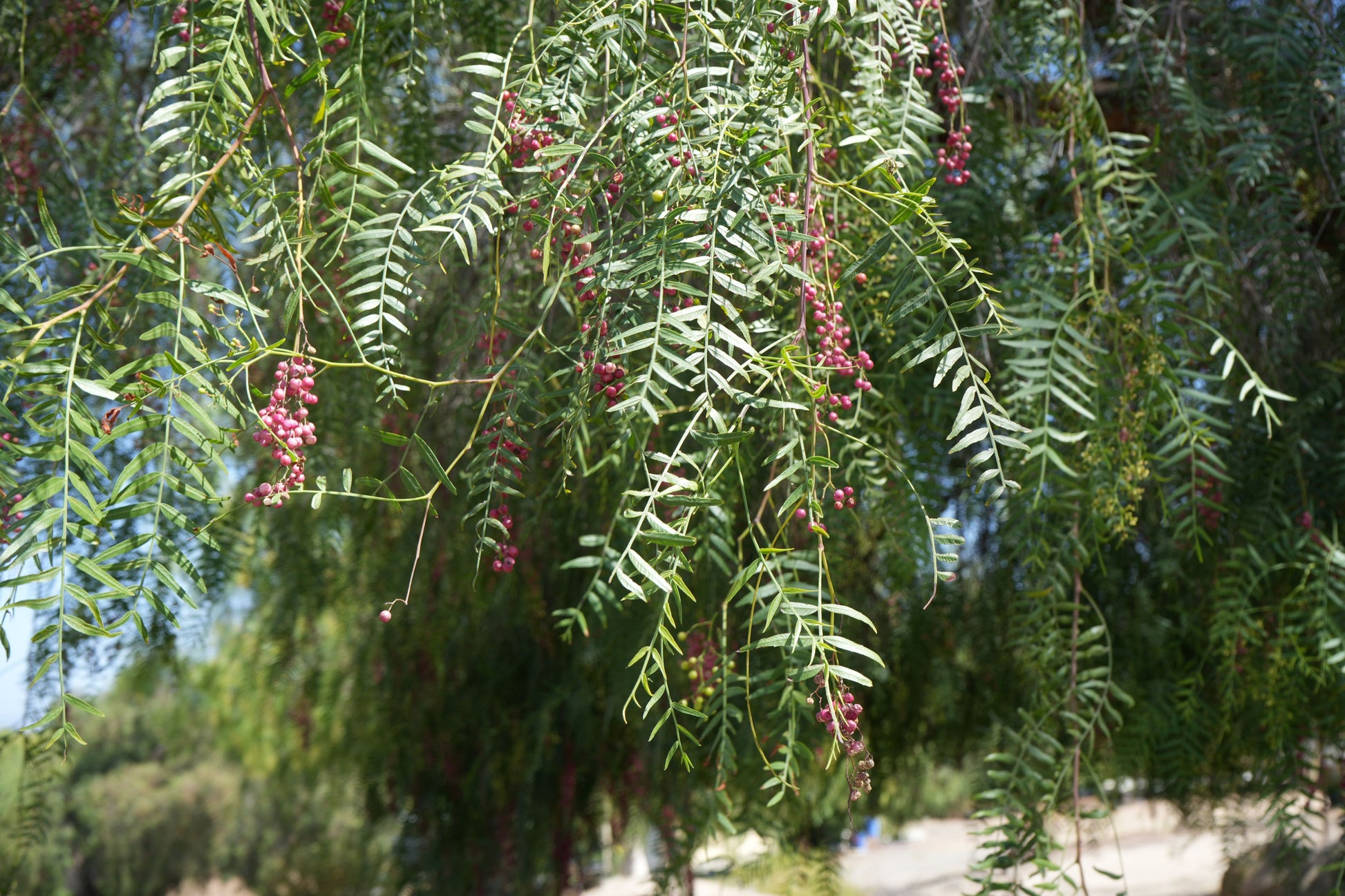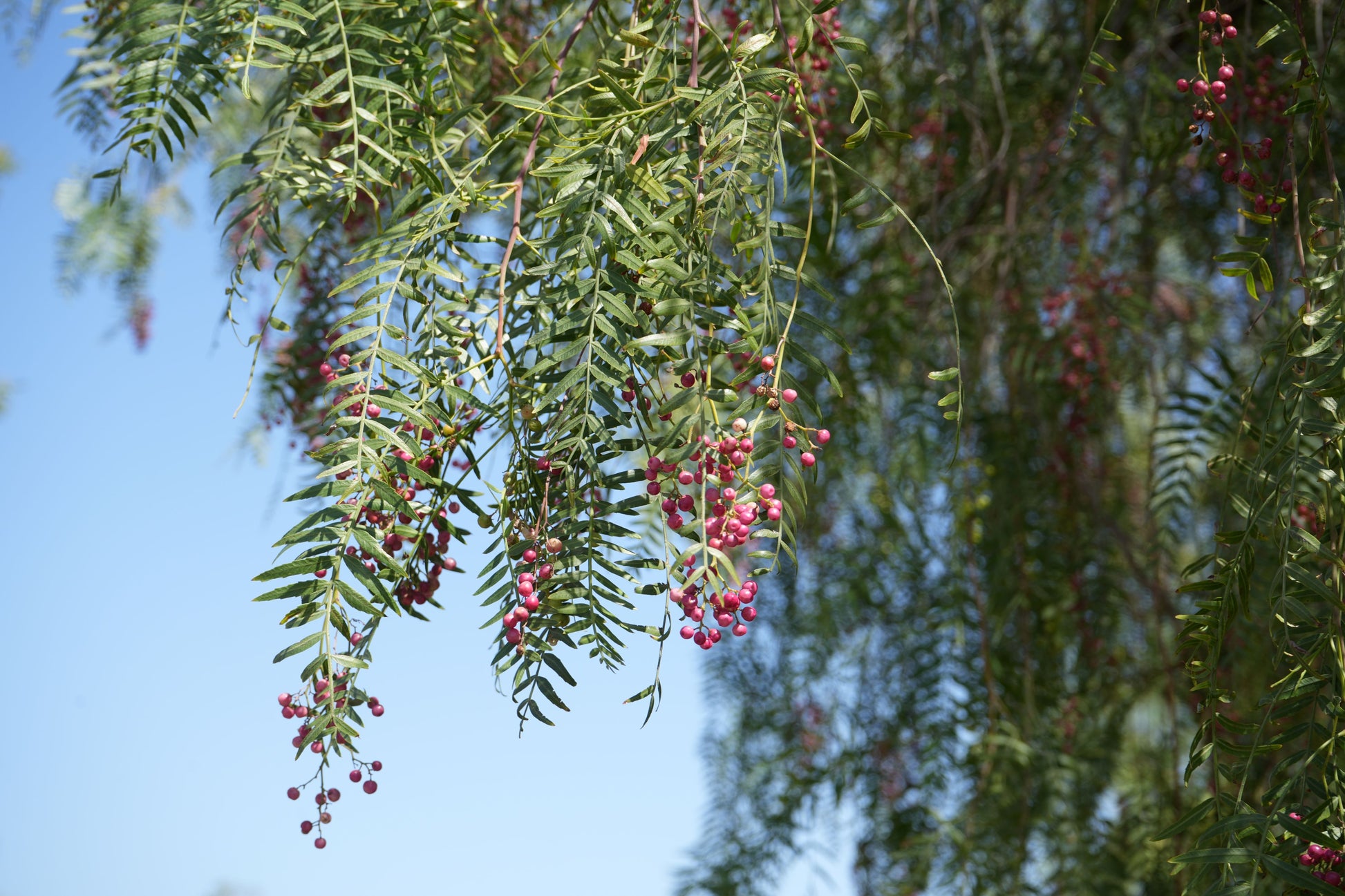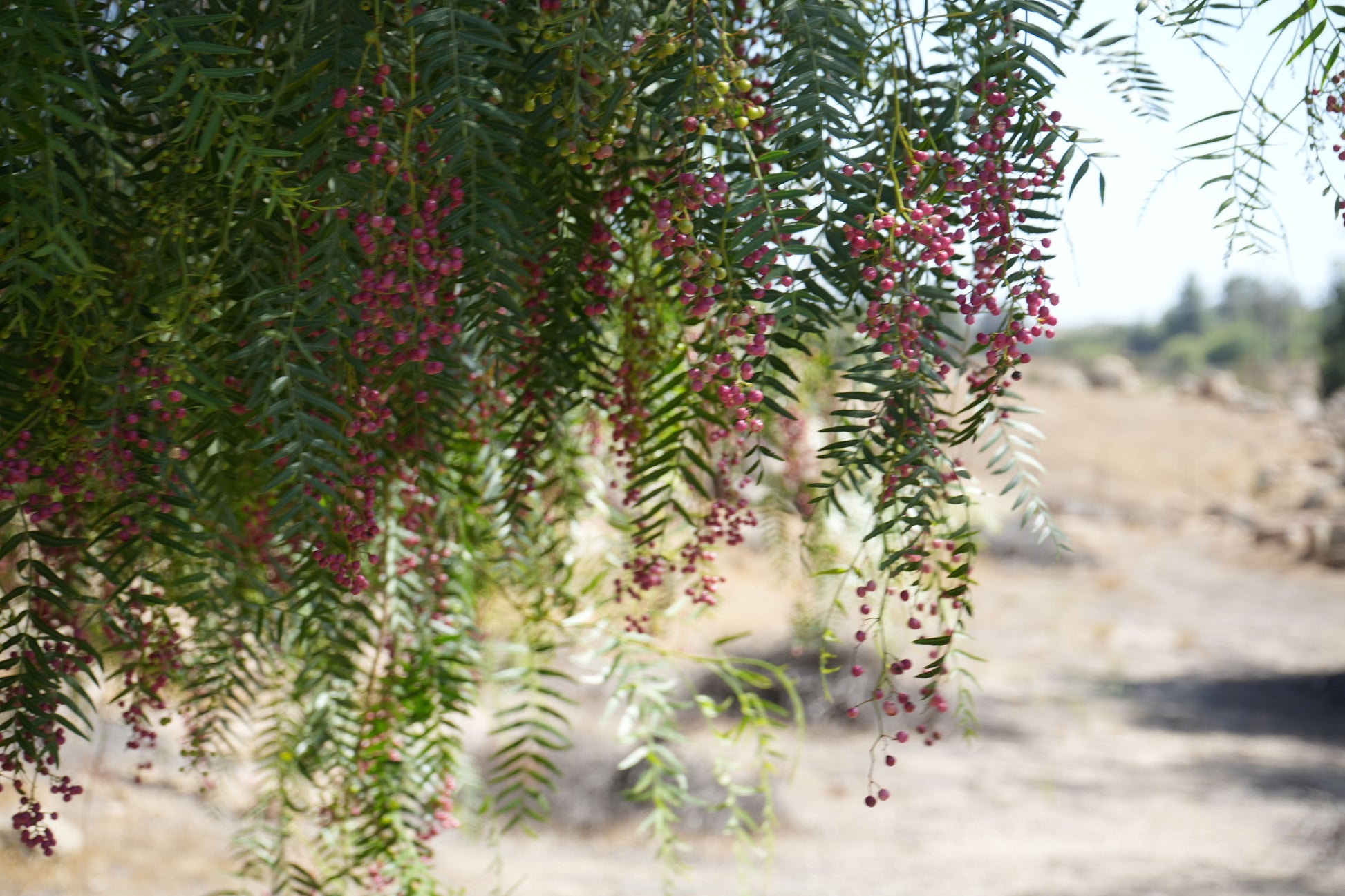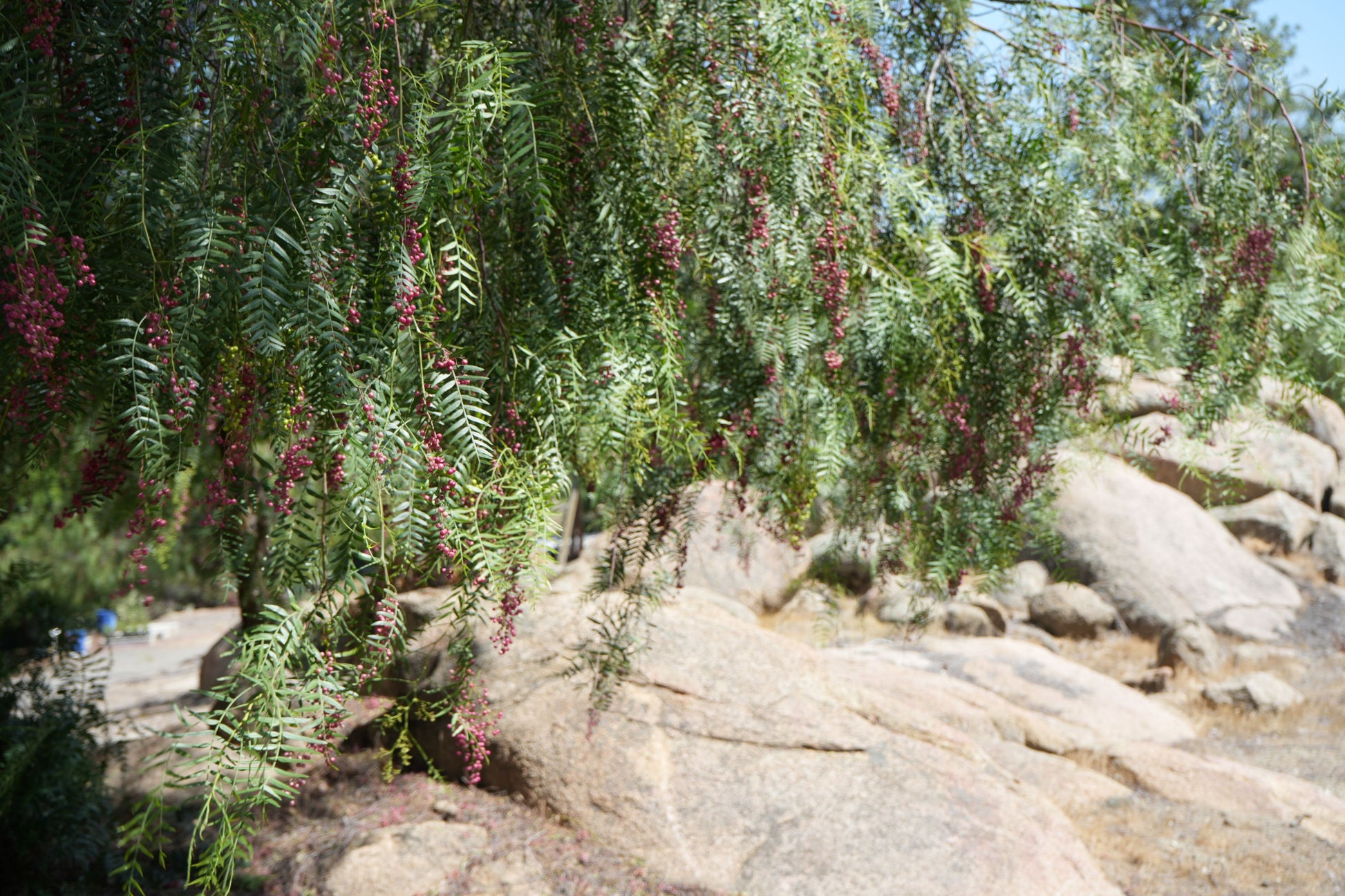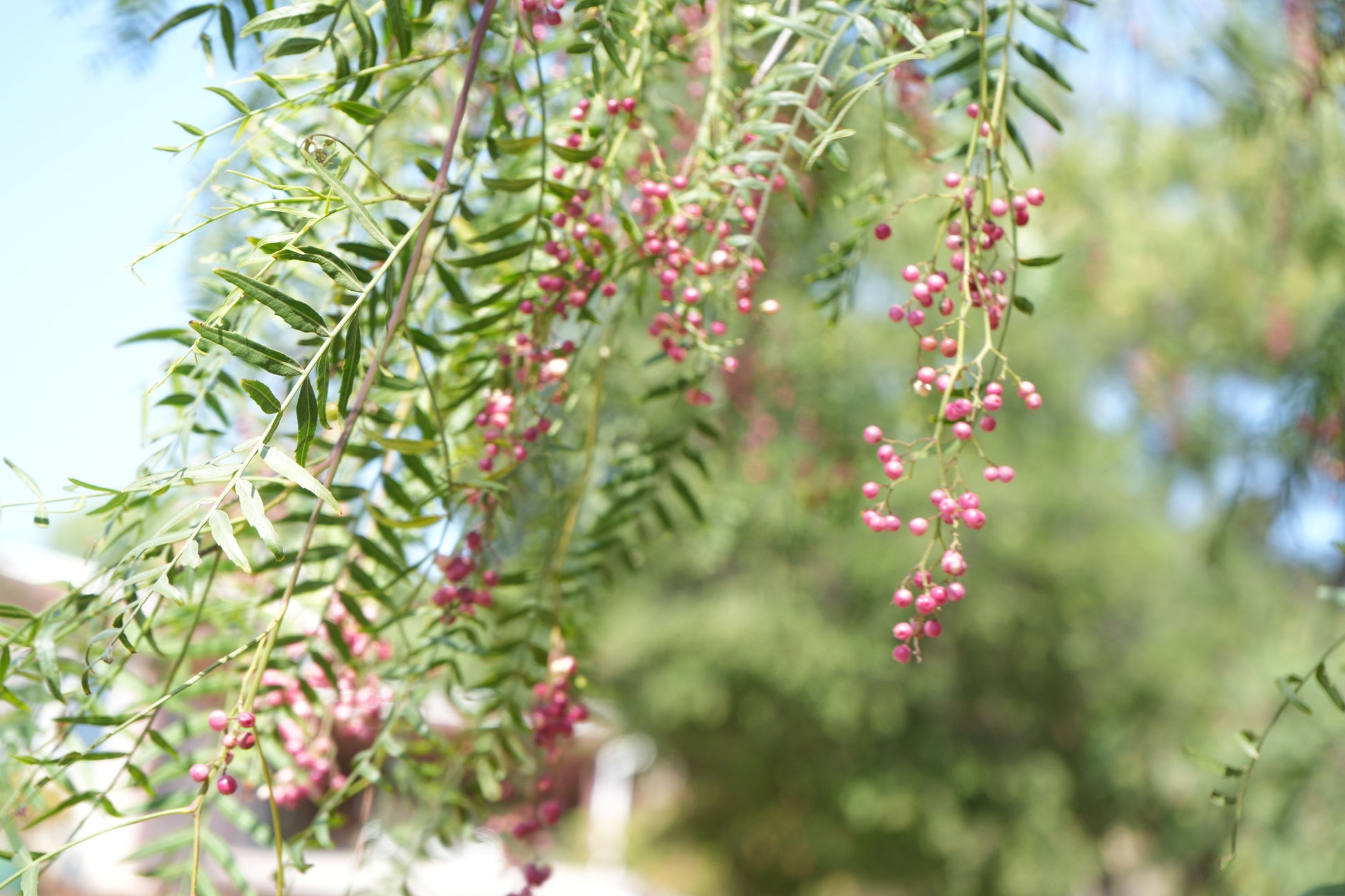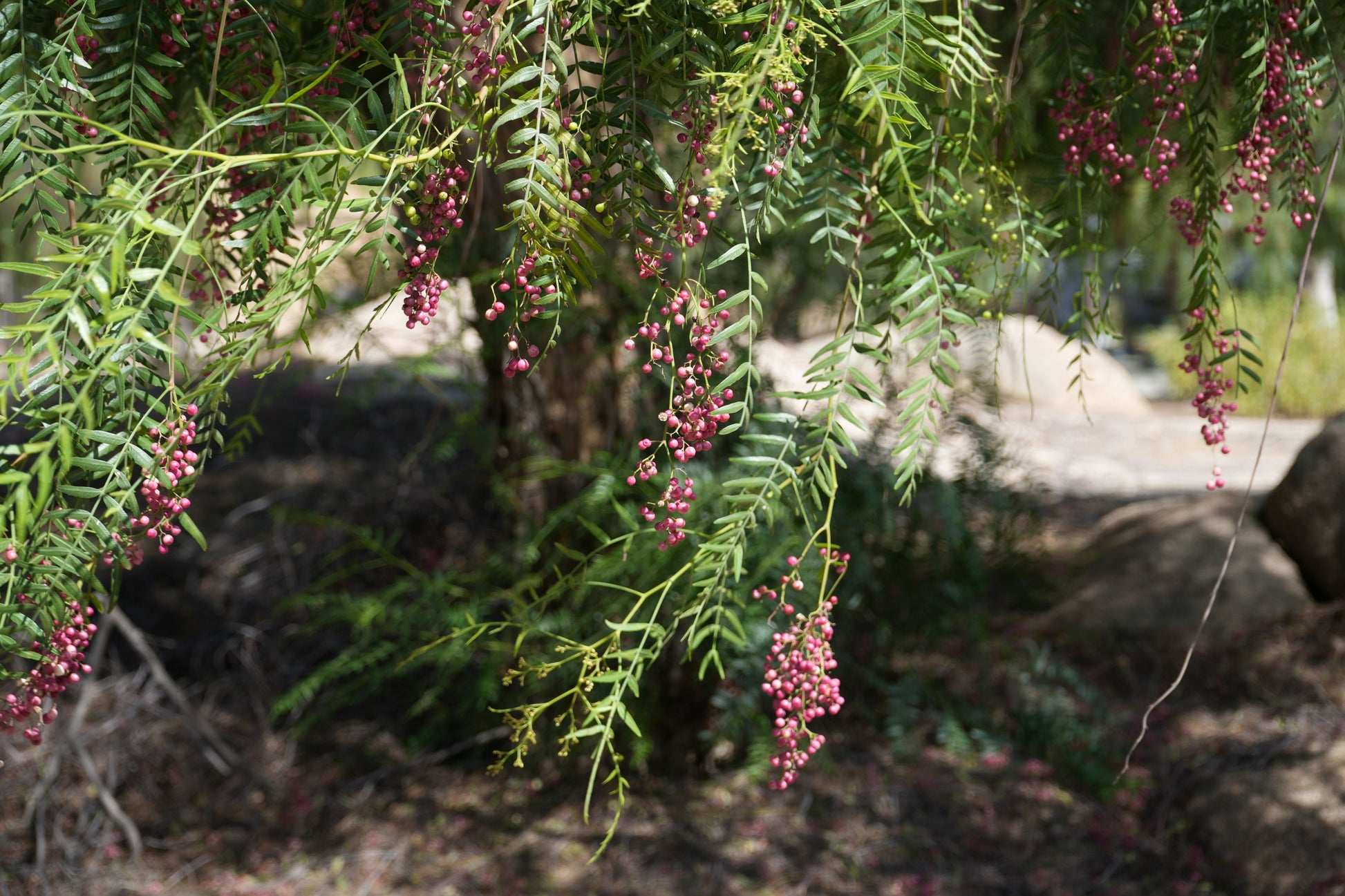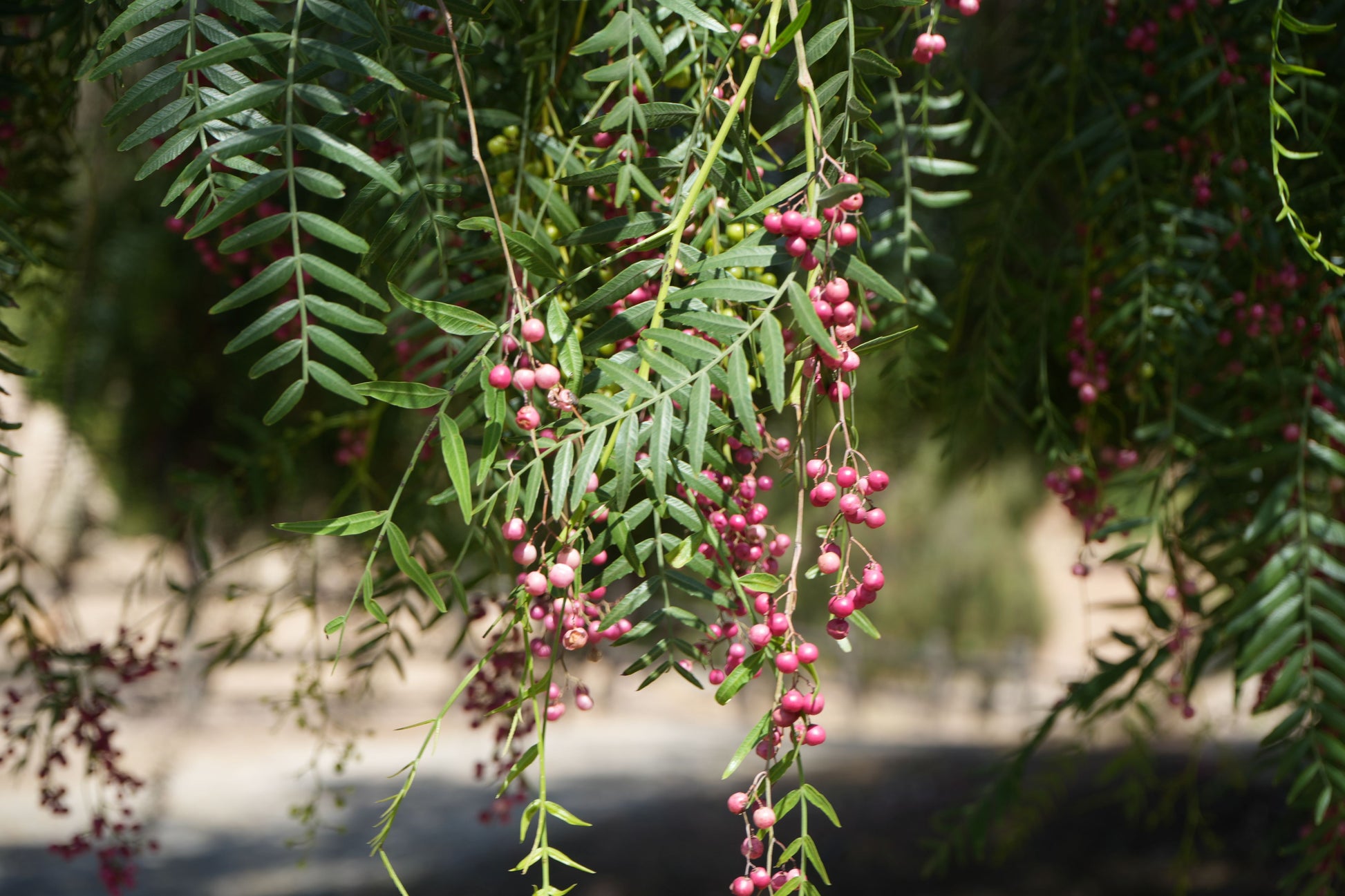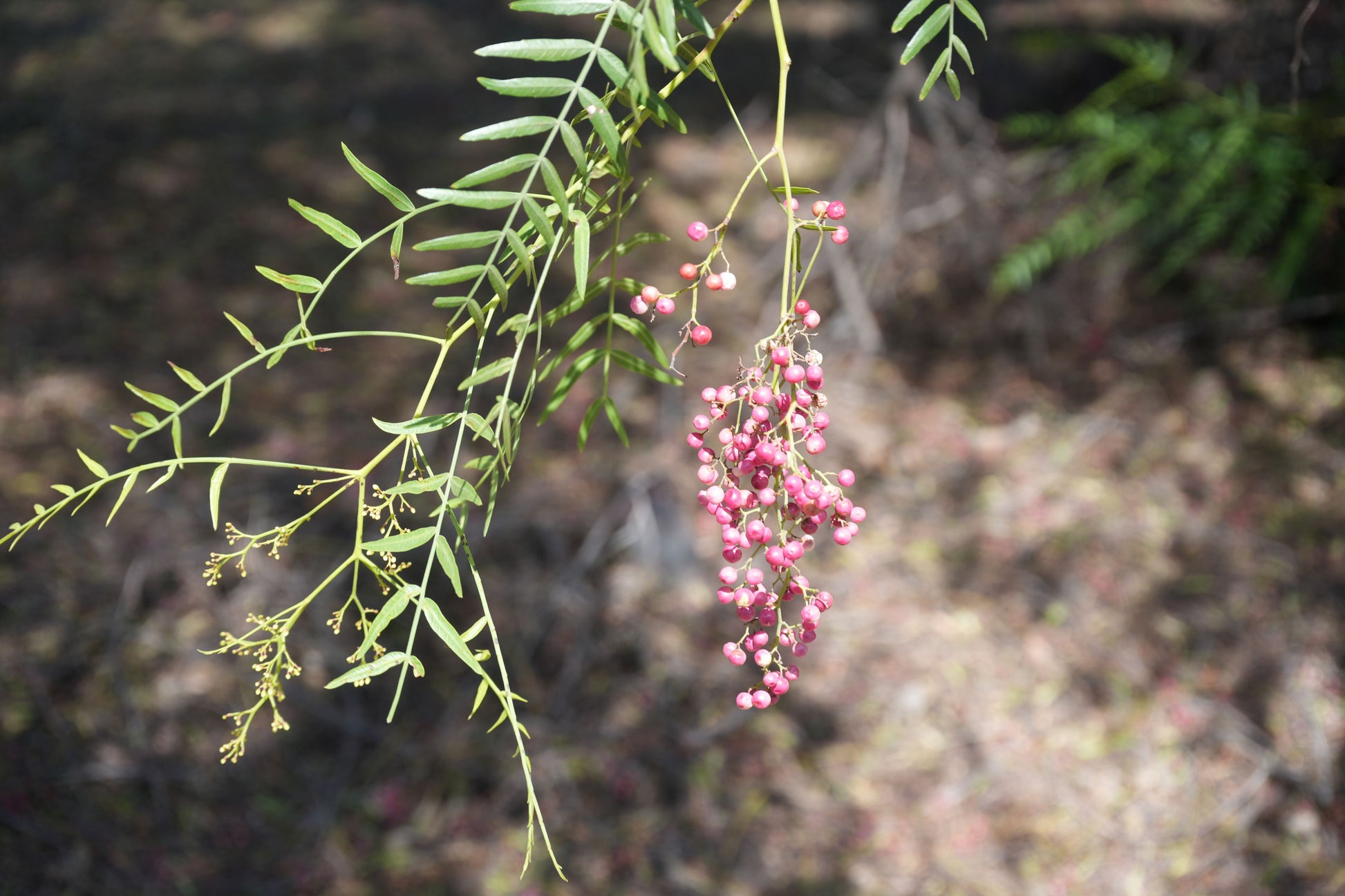Bonte Farm
Schinus molle (Peruvian Pepper Tree): A Drought-Tolerant Shade Provider
Schinus molle (Peruvian Pepper Tree): A Drought-Tolerant Shade Provider
Couldn't load pickup availability
Schinus molle (Peruvian Pepper Tree): A Weeping Icon of Arid Beauty
The Schinus molle, commonly known as the Peruvian Pepper Tree or California Pepper Tree, stands as an iconic symbol in arid and Mediterranean landscapes, particularly across Southern California. This resilient evergreen tree captivates with its gracefully weeping branches, finely textured foliage, and prolific clusters of rosy-pink, "peppercone-like" berries. Renowned for its drought tolerance and adaptability, Schinus molle offers a distinctive blend of ornamental beauty and practical benefits, making it a superb choice for large gardens, parks, and sustainable landscapes. Its robust nature and ability to thrive in challenging conditions, coupled with its unique aesthetic, establish it as a garden essential for those seeking a touch of old-world charm and resilience.
A Cascade of Foliage and Rosy Berries:
· Weeping Form: Schinus molle is characterized by its elegant, pendulous branches that create a soft, weeping canopy, reminiscent of a willow. This graceful habit provides excellent dappled shade and adds a sense of movement and tranquility to the landscape, making it a popular choice for softening harsh architectural lines or creating a relaxed ambiance.
- Feathery Foliage and Distinctive Berries: The tree boasts an abundance of bright green, finely divided, fern-like leaves, which release a peppery aroma when crushed. Complementing this lush foliage are the countless clusters of small, round, rosy-pink berries that ripen in late fall and persist through winter, resembling miniature peppercorns. These highly ornamental fruits provide year-round visual interest and are a significant characteristic of the tree.
Botanical Characteristics:
- Scientific Name: Schinus molle (common names: Peruvian Pepper Tree, California Pepper Tree, Peppercorn Tree)
- Growth Habit: Evergreen, weeping tree, often multi-trunked or with a single, gnarled trunk.
- Foliage: Bright green, pinnately compound, needle-like leaflets, aromatic when crushed.
- Flowers: Inconspicuous, small, yellowish-white flowers produced in drooping panicles.
- Bloom Time: Generally spring to summer, with berries developing in late fall and persisting through winter.
- Mature Size: Typically reaches 25-40 feet in height and 25-40 feet in width, forming a broad, spreading canopy.
- USDA Hardiness Zone: 8-11 (tolerates mild frosts and a wide range of temperatures).
Cultivation and Care:
- Sunlight: Thrives in full sun exposure, requiring a minimum of 6 hours of direct sunlight daily for optimal growth and abundant berry production. It is highly tolerant of intense heat and reflected heat.
- Soil: Adaptable to a wide range of well-drained soil types, including sandy, loamy, and even some clay soils. Excellent drainage is crucial; avoid waterlogged conditions, which can lead to root issues. It tolerates both alkaline and slightly acidic soils.
- Water: Highly drought-tolerant once established. Water thoroughly during the initial establishment period (first 1-2 years). After establishment, supplemental irrigation is rarely needed in Mediterranean climates, though occasional deep watering during prolonged dry spells in very hot climates can be beneficial. Overwatering should be avoided as it can lead to chlorosis and limb breakage.
- Fertilizer: Generally, Schinus molle requires minimal fertilization. If desired, a balanced, slow-release granular fertilizer can be applied sparingly in early spring, especially for young trees, to support healthy growth. Avoid excessive nitrogen.
- Temperature: Prefers mild to warm temperatures and is notably resilient to heat. While tolerant of mild frosts, prolonged hard freezes can cause damage, especially to young plants.
- Pruning: Light pruning is recommended to maintain a desirable shape, remove dead or crossing branches, and to lift the canopy for pedestrian clearance. This is best done in late winter or early spring before new growth begins. Be mindful that branches can be somewhat brittle in strong winds.
Landscape Use:
- Specimen Tree: Its striking weeping habit, gnarled trunk, and colorful berries make Schinus molle an exceptional specimen tree, providing year-round visual interest and a strong architectural statement in large gardens, parks, and open spaces.
- Shade Tree: The dense, wide canopy offers excellent dappled shade, making it ideal for creating cool, comfortable areas in hot climates, perfect for patios or seating areas.
- Drought-Tolerant Landscapes: Its remarkable drought tolerance makes it a cornerstone plant for xeriscaping, Mediterranean-style gardens, and water-wise designs, significantly reducing water consumption.
- Coastal and Arid Gardens: Schinus molle demonstrates good tolerance to salt spray and dry conditions, making it a suitable choice for coastal and desert landscapes.
- Street Tree/Park Tree: Often used along avenues, in parks, and large open areas where its fast growth and resilience are advantageous.
Wildlife Attraction:
The persistent pink berries of Schinus molle are a valuable food source for various bird species during the fall and winter months, contributing to local avian biodiversity. The canopy also provides shelter and nesting sites for birds and small wildlife.
Pest and Disease Resistance:
Schinus molle is generally robust and exhibits good resistance to most common garden pests and diseases. The primary concern is root rot, which can occur in poorly drained or consistently waterlogged soils. Ensuring excellent drainage is paramount for the tree's health. Occasionally, scale insects or psyllids might be observed, but they rarely cause significant damage to healthy, established trees. In some areas, it has been noted as a potential alternate host for black scale.
Propagation:
Propagation of Schinus molle is primarily achieved through seeds, which germinate readily when sown in well-drained soil. Cuttings from semi-hardwood growth can also be rooted, especially during the warmer months, often with the aid of rooting hormones. Seed propagation generally yields good results and is a common method for this species.
Incorporating Schinus molle into Your Landscape:
- Planting Location: Select a spacious, sunny location that offers excellent drainage. Allow ample room for its mature spread to prevent future overcrowding and infrastructure conflicts (roots can be aggressive).
- Soil Preparation: While adaptable, improving heavy clay soils with sand or gritty organic matter prior to planting will significantly enhance drainage and long-term health.
- Companion Plants: Pair with other drought-tolerant and Mediterranean-climate plants that thrive in similar full-sun, well-drained conditions. Examples include lavenders, rosemary, California native sages, succulents, and other resilient shrubs and trees that complement its unique form and color.
Relevant Plants: Schinus molle, Peruvian Pepper Tree, California Pepper Tree, Weeping tree, Drought-tolerant tree, Evergreen tree, Mediterranean garden, Xeriscape, Pink peppercorns, Aromatic foliage, Specimen tree, Fast-growing tree, Desert landscape, Iconic California tree.
Share














